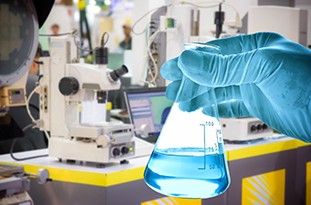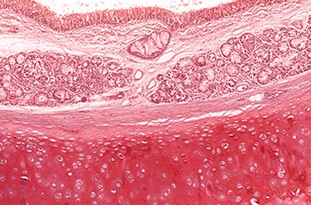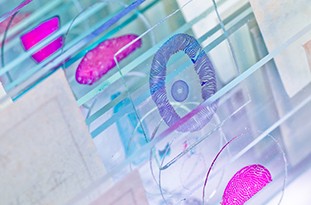Fisher Scientific offers a wide range of chemicals and reagents, including histology-grade solvents, designed specifically for medical laboratory professionals.
Histology
Histology is the study of the microscopic anatomy of cells and tissues. Fisher Scientific offers a wide range of chemicals and reagents, including histology-grade solvents, designed specifically for medical laboratory professionals.
All Fisher Scientific chemicals undergo rigorous quality assurance and testing procedures. Additional benefits of choosing the Fisher Scientific brand include:
- Histology-grade solvents available in F-style poly bottle
- High-purity Optima-grade solvents available in Safe-Cote bottles
- Solvents filtered to remove particulates
Let Fisher Scientific help you find everything you need for use in your histology applications. Explore products by technical procedure:
Step One: Fixation
In the fixation stage, a fixative is used to modify tissue by stabilizing the protein, so it is resistant to further changes; thus, fixatives are used to protect tissue from degradation and to maintain the structure of the cells, including sub-cellular components, such as cell organelles (nucleus, endoplasmic reticulum and mitochondria).
Differentiators
- Extensive line of common fixatives
- "Use tested" by an independent histology lab
Step Two: Processing
In the processing stage, tissues must go through a dehydration process to replace water with the material that will be used for embedding, so the tissue samples adhere to the embedding material. The most common technique is paraffin wax embedding.
Samples are immersed in multiple baths of progressively more concentrated ethanol to remove water from the tissues, followed by a clearing agent, such as xylene, to remove the alcohol and finally hot molten paraffin wax, which replaces the xylene and infiltrates the tissue.
Differentiators
- Various ease of use packaging configurations, which include FisherLOCK tamper-evident caps, EcoSafPak shipper and F-style bottles
- Specially filtered for use in histology applications
Step Three: Embedding
In the embedding process, tissue samples and liquid embedding material are placed into molds and allowed to harden. The hardened blocks containing the tissue samples are then ready to be sectioned. Embedding can also be accomplished using frozen, non-fixed tissue in a water-based medium, usually a water-based glycol or resin.
Differentiators
- Superior embedding compounds for sectioning of tissues for M.P. 56° - 57°C and 55° - 57°C
Step Four: Sectioning
In the sectioning phase, the tissue is sliced into very thin (0.5 - 10 microns; 1000 microns = 1mm) sections using a microtome. These slices, usually thinner than the average cell, are then placed on a glass slide for staining. Frozen tissue embedded in a freezing medium is cut on a microtome in a cryostat.
Step Five: Staining
Routine staining is done to give contrast to the tissue being examined. Hematoxylin and Eosin (H&E) are the most commonly used stains in histology.
- Hematoxylin is combined with a metal mordant, such as aluminum, and the hematoxylin-aluminum complex is used to stain cell nuclei blue/black.
- Eosin is the most widely used counterstain in the routine staining of tissue sections. The best staining with eosin occurs at pH 4.5 to 5, and when used properly, at least three shades of pink can be obtained. Erythrocytes, collagen and the cytoplasm of epithelial or muscle cells should stain different shades of pink when using eosin.
There are many other techniques that have been used to selectively stain cells and cellular components.
Differentiators
- Certification on each label
- Lot-to-lot consistency
- "Use tested" by an independent lab to ensure superior staining in histological applications
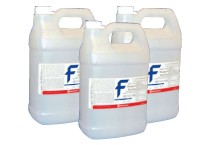
Fisher Chemical F-Style Poly Bottle
Fisher Chemical offers many products in the environmentally friendly F-style poly bottle, which:
- Features a square shape to maximize bench and shelf space
- Includes a tamper-evident cap
- Can be shipped without cushioning material to eliminate waste disposal problems
- Is strong and durable enough to withstand UN performance tests
- Is ultra convenient and safe
Technical Resources
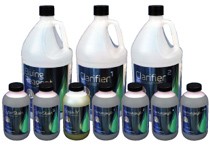
Fisher HealthCare Pinnacle Stains Portfolio
Unique chemical formulae of the Pinnacle Portfolio promotes long-term chemical stability to extend the usable life of each component.
- The Pinnacle Portfolio is designed as a system - each component has added value and benefits that reduce your cost per slide
- Pinnacle Portfolio products are subjected to some of the highest quality manufacturing standards in the industry
- Packaging improvements enhance product longevity
Technical Resources
Loading




